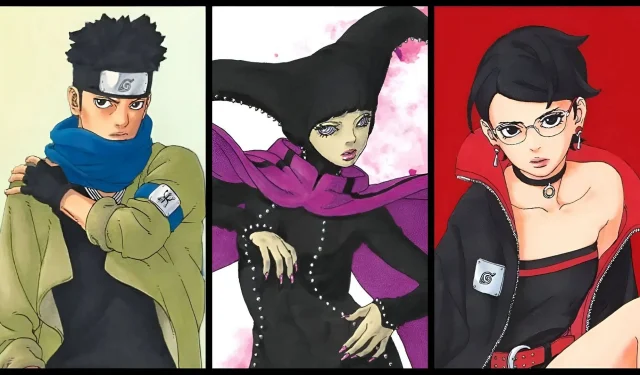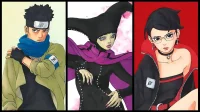The recent chapter of Boruto: Two Blue Vortex, Chapter 20, illustrates an emotionally charged narrative that delves into the multifaceted nature of love, exploring its capability to serve as both a source of strength and a pathway to vulnerability.
In this installment, Ikemoto skillfully captures the essence of characters grappling with profound choices, portrayed through delicate facial expressions and intricate panels. Notably, Konohamaru’s pivotal decision marks a significant shift from the idealism present in the original Naruto series, steering the plot toward darker, more complex themes.
This chapter is remarkable in its dual presentation of love: it emerges as a source of power yet simultaneously serves as a tool for deception, leading to betrayal. The narrative maintains its gripping nature as characters confront complex moral dilemmas devoid of uncomplicated resolutions.
Disclaimer: This article contains spoilers from the manga.
Konohamaru’s Defining Choice and Sarada’s Growth: A Clash of Ideals in Chapter 20
Chapter 20 of Boruto: Two Blue Vortex reaches an emotional zenith as Konohamaru confronts Matsuri. His approach of using dialogue—a strategy reminiscent of Naruto’s diplomatic methods—appears to be effective at first. However, the narrative takes a gripping twist when Konohamaru opts for decisive action following Shikamaru’s pragmatic counsel.
This moment reflects Konohamaru’s character development as he struggles between loyalty to Naruto’s ideals and the harsh realities that some threats demand more than just conversation to resolve. The profound sense of betrayal resonates strongly, enhanced by Matsuri’s genuine vulnerability during their interaction.
A fleeting glimpse of potential redemption is overshadowed by unavoidable deception, compelling readers to reassess the viability of Naruto’s philosophies of understanding and forgiveness in an increasingly complicated world.
Concurrently, Sarada experiences a significant transformation when she activates her Mangekyo Sharingan, influenced by Yodo’s timely assistance. At 12, Sarada first awakened this power amidst worries for Boruto when the village turned against him; now, her strategic utilization of emotion-based abilities reflects her maturity as a shinobi.
Sarada’s mastery of her powers sharply contrasts with Konohamaru’s earlier compromise, illustrating how emotional ties can evolve into formidable strengths.
Chapter 20: A Visually Striking Exploration of Turmoil, Betrayal, and Moral Evolution
The visual storytelling in Chapter 20 reaches impressive heights, melding dynamic combat scenes with intimate close-ups that capture fleeting emotions. Characters’ expressions, juxtaposed within adjacent panels, convey a spectrum of feelings, including hope entwined with betrayal.
The “Blue Vortex”referenced in the title serves as a powerful visual metaphor, encapsulating the emotional turmoil and ethical complexities presented in this latest chapter. The stakes established resonate genuinely, drawing readers further into the narrative.
Konohamaru’s heart-wrenching choice to betray Matsuri’s trust to save Moegi embodies a tension between personal loyalty and greater responsibilities. This theme echoes throughout the history of the shinobi world, yet it feels acutely poignant for characters who once embraced a vision of an idealistic future.
Additionally, the potential introduction of Amado’s technological solutions adds an intriguing layer to the moral quandaries depicted, suggesting that traditional dichotomies surrounding life and death may no longer hold relevance.
Conclusion
Boruto: Two Blue Vortex, Chapter 20, signifies a critical juncture in re-examining long-standing beliefs about the transformative power of understanding and empathy upheld in the Naruto saga.
By exploring how love can be both a fortifying force and a catalyst for betrayal, Ikemoto has crafted a richly layered narrative that resonates with characters who have outgrown the simplicity of their earlier stories’ moral dichotomies.
As Konohamaru reconciles the consequences of his pragmatic choices and Sarada showcases her mastery of emotionally derived powers, readers are invited to contemplate which path signifies true growth in this ever-evolving shinobi landscape—one where the multifaceted nature of love reveals both its splendor and its burdens.


